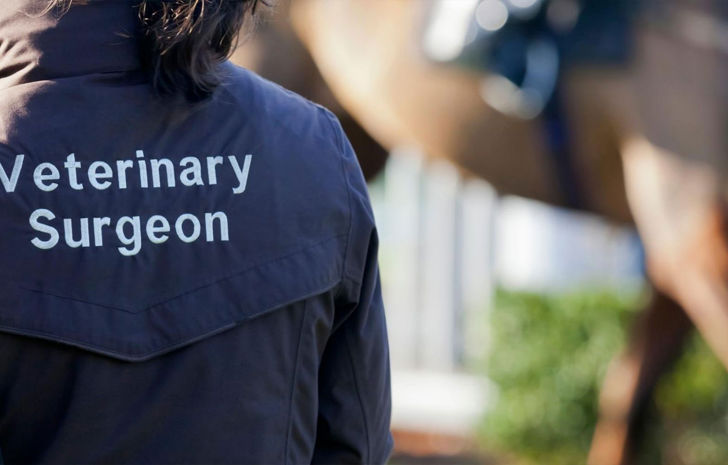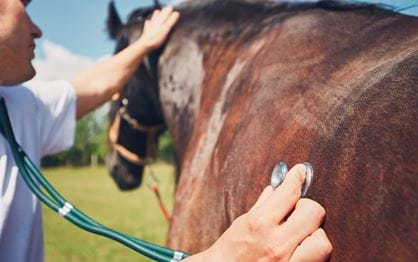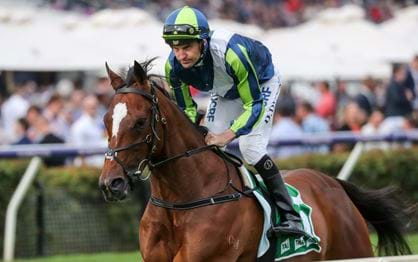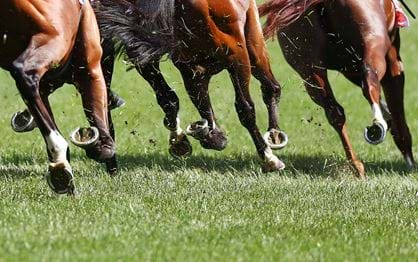
Good bones
Vital research undertaken by Dr Chris Whitton and his team at the Equine Limb Injury Prevention Program at the University of Melbourne has progressed the understanding of how and what kind of injuries occur in racing, and provides strategies that can reduce rates of significant bone injuries and deaths.
The injuries of horses participating in the Melbourne Spring Carnival over recent years are reminders of the potential dangers of racing, but these events have given rise to greater understanding of how they can be avoided.
Bone, like most materials, weakens when subjected to repeated high loads. Most bone and joint injuries in racehorses are the result of fatigue damage, which means they occur due to weakening of bone over the course of training and racing, rather than because of a single incidental injury such as a fall or trip. The bones of racehorses endure extreme loads repeatedly every time they gallop, with the highest loads occurring in the joints that are most commonly injured: the fetlock and knee (carpal joint).
Thankfully complete fractures of bone occur infrequently, but less severe fatigue injuries to the joint surface are common in racehorses. Such injuries can result in poor performance and lameness, but are hard to identify unless advanced imaging equipment like scintigraphy, CT or MRI are used.
The most important thing to understand about bone fatigue is that it builds up over time. Due to fatigue, tiny cracks will accumulate in the bone with training and racing. This means that it is not what the horse was doing on the day an injury occurred that is most important, but rather what the horse was doing in the days, weeks or months leading up to the injury. With every fast gallop or race, a proportion of the lifespan of the bone is used up.
Training and racing intensely in the short term might seem to be a successful strategy if there is no immediate consequence, but by depleting the bone’s reserves it may have made the horse more prone to future injury.
Managing bone to prevent injury
Bone is an amazing tissue. Rather than being inert, it is highly dynamic and in the right training environment can increase its resistance to injury through adaptation. Bone also has an inbuilt repair mechanism that removes older fatigued bone and replaces it with fresh new bone.
During training, the horse’s bone adapts to even short bursts of speed by laying down new bone to increase the total amount of bone (a process called modelling). Understanding and exploiting these processes is the secret to preventing injury.
Understanding how bone adapts under different training loads
Most trainers know that a horse’s skeleton needs to get used to high-speed exercise in order to reduce the risk of limb injuries, but recent research indicates that bone adaptation is even more important than previously thought.
Young horses need at least 16 weeks of training before bone has completely adapted to racing speeds. There are no shortcuts. Complete adaptation is likely to be several weeks less for racehorses that have undergone at least one full preparation.
On the other hand, bone loss (‘de-adaptation’) can be quite rapid when race training is interrupted. Even with short rest periods of ten days, up to 10% of bone is lost, making it considerably weaker and therefore prone to injury if high-speed exercise is reintroduced too quickly. Such a loss would take 20 days to be recovered following the careful reintroduction of training, and therefore intense speed work should be avoided during this period.
Understanding and exploiting these processes is the secret to preventing injury.
How bone adaptation affects fractures
In relation to bone adaptation, fractures can occur in two main ways: 1. In horses with well-adapted bone, i.e. experienced racehorses, that do a lot of high-speed distance work over the course of their career, or a large amount of work in a short period of time, or 2. In horses whose bone is not well adapted to training and racing, i.e. with horses that are entering training for the first time no matter what age, fracture can occur with much lower levels of training. So, in simple terms, both too much and too little training increase the risk of fracture in racehorses.
Bone repair and the importance of rest periods
Racehorses need periods of time away from the rigours of racing and race training to stay at their peak. Spells from racing are essential to maintain bone and joint health because when horses are racing at their peak, bone repair is inhibited, meaning that there is no replacement of bone damage that accumulates with galloping. However, during rest periods, the bone repair processes are activated, allowing removal of damaged bone and replacement with new bone. Periods of rest from training are therefore essential to prolong the careers of racehorses.
The obvious question then is, how much training is too much, and how much rest is needed to maintain bone damage at safe levels? As with all biological questions, this is difficult to answer for a particular horse because of the large variation between individual animals. However, based on the rate of joint injury in racehorses, it is reasonable to assume that many horses are not getting enough time away from training to allow adequate bone repair.
Although the racing calendar can make it difficult to coordinate, finding an extra few weeks in the paddock each year for rest and recovery will mean fewer injuries that can force an unplanned rest or even retirement.
Early detection of bone injury
Because fractures develop over time as microdamage accumulates in the skeleton, there is the opportunity for early detection prior to a complete fracture occurring. Unfortunately, this is not easy because microdamage is difficult to detect and can only be seen on x-rays when the fracture is quite advanced. For this reason, much effort has gone into developing more sophisticated imaging methods. The most recent of these in Australia is standing CT, which is basically three-dimensional x-rays that allow high-resolution imaging of the lower limbs of horses extremely rapidly.
Other useful imaging technologies are scintigraphy (bone scanning), and MRI (magnetic resonance imaging). The really important point to understand is that ‘clean x-rays’ does not mean there is no bone damage. You really need more advanced imaging before you can say that a horse’s bones are healthy.
So, in summary, injury prevention in racehorses involves:
- Allowing time for the skeleton to adapt to galloping when training is first introduced or when it is reintroduced after a rest period.
- Minimising the accumulation of bone damage by avoiding intense training and racing campaigns. This can be achieved by reducing the distance of galloping workouts and spacing races by three to four weeks.
- Scheduling regular spells from intense training.
- Regular advanced imaging is needed to maximise bone health.


